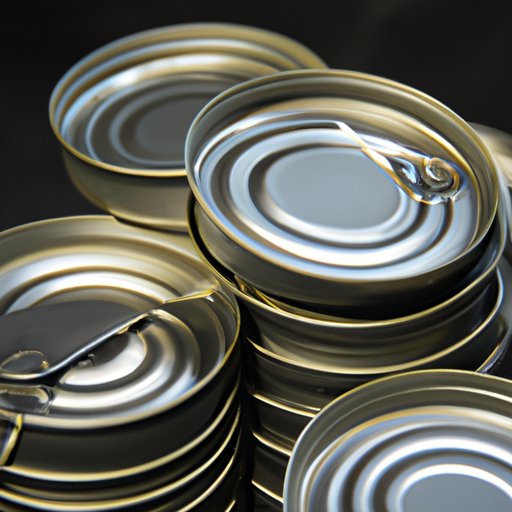
Introduction
Are you an avid canning enthusiast? Do you often wonder about the safety of reusing canning lids? In this article, we will explore the truth about canning lids and whether or not they can be safely reused. We will also provide cost-saving tips, discuss the environmental impact of canning, debunk common myths, provide a beginner’s guide to canning and its lids, and take a closer look at the history of canning.
The Science Behind Canning Lids
One of the reasons that canning lids need to be replaced after one use is because they can become warped and bent, preventing a proper seal. A faulty seal can cause bacteria to develop in your canned goods, which can be extremely harmful to your health. It is important to always use a new lid when canning to ensure a proper seal. There are two types of canning lids available in the market: metal and plastic. Metal lids need to be replaced after one use while plastic lids can be reused up to five times.
Cost-saving Hacks for Canning Enthusiasts
There are safe tips and tricks to reuse canning lids and save on costs. For instance, you can reuse a canning lid that hasn’t been used but not one that has been on a fully canned food. You can also use a rubber gasket which can take up fewer seal spots and effectively seal a jar with less than perfect canning lids. If you want to make the most out of your canning lids, you can use them for non-canning purposes such as organizing your pantry or storing small objects. However, it’s essential to take precautionary measures when reusing canning lids to avoid contamination and bacterial growth.
The Environmental Impact of Canning
Not reusing canning lids can add up to the tons of waste that end up in landfills every year. By reusing canning lids, you can help reduce waste and protect the environment. In addition, proper disposal of canning lids is essential. Before disposing of your old canning lids, you need to check out your local recycling center since some recycling centers do not accept them.
A Beginner’s Guide to Canning
Canning is a method of preserving food in jars, and it offers a wide range of benefits, including cost-saving and healthy eating. Canning equipment and materials needed include jars, lids, and a canning pot. When using lids, it is essential to read the manufacturer’s instructions and follow the appropriate steps to ensure a proper seal. Some tips to remember are making sure the lids, jars, and tools are cleaned properly and using lids only once for the safety of you and your loved ones.
Debunking Common Myths About Canning Lids
One of the most common myths about canning lids is that they can be reused indefinitely. However, as previously explained, canning lids need to be replaced after one use to prevent contamination. Other myths include using wax to seal jars and sterilizing lids with bleach. Wax is not a seal, and bleach can leave a residue that can cause harm to your canned products and your family. It is crucial to have accurate information when dealing with canning lids to prevent foodborne illnesses.
The History of Canning and Canning Lids
Canning dates back to the early 19th century where it was used primarily to preserve food for long journeys, war, and famine. The earliest canning lid was made of glass that was held in place by cork. Today, there are two main types of canning lids, metal and plastic, each of which has its unique benefits. Over the years, canning technology has continued to evolve, with more emphasis placed on safety, efficiency, and user-friendliness.
Conclusion
In conclusion, canning is a fun, cost-effective, and efficient way of preserving food. When using canning lids, it is crucial to ensure a proper seal, which means using new lids every time you can your food. However, reusing canning lids comes with many benefits such as cost-saving and reducing waste when done safely. Debunking common myths and knowing the history of canning can help you make informed decisions when it comes to canning lids. By following the guidelines discussed in this article, you can ensure the safety and quality of your canned food and join hands in protecting the environment.





